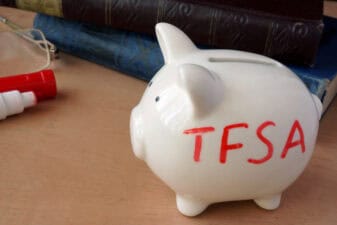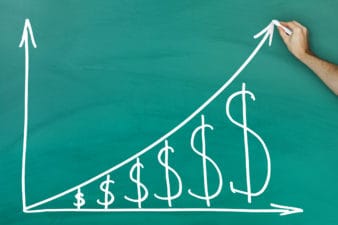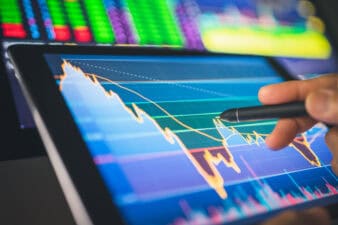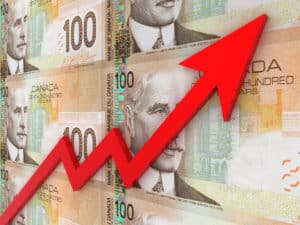In the first of this new series of articles, we looked at how eliminating debt was the first—and huge!—step in the long trek to financial independence, or what I’ve dubbed Findependence. If you examine the long journey (whether for retirement or shorter-term lifestyle goals dubbed FIRE, or Financial Independence/Retire Early), you’ll realize that you’ve not really even begun while you’re still mired in debt. Getting out of debt just means you’ve been admitted to the racetrack, where the race to financial freedom begins in earnest.
The thing about debt is that you are paying OUT interest to creditors, whether they be a bank holder of your mortgage, a credit card company, or anyone else to whom you owe money. Being an investor means flipping roles: you want to BE the creditor to whom someone else owes YOU money in the form of interest payments or, if you’re a stock investor, dividends and/or capital gains. I’ve been in both roles, and I can confirm it’s way better receiving interest income or dividends than having to dish it out!
But before we look in earnest at investing, we need to consider one other key concept and term that is a prerequisite to investing: saving. Saving is really the intermediate step between debt elimination and investing.
What is saving?
At its most basic level, it’s creating a surplus between what you are earning and what you are spending, while putting that surplus to work for you. And whether it’s debt repayment or saving, the necessary step to accumulating a surplus is frugality.
The beauty about saving is that, once the process is begun, it sets the stage for when money begins to beget still more money—a process that will ultimately happen even while you’re sleeping; so does investing.
The difference is that saving is a kind of junior partner to investing—it works a bit for you but nothing so hard as true investing for the long term. Saving begets small amounts of money; ultimately, investing can beget huge amounts of money, hopefully enough to live on whether or not you choose to work another day in your life.
Typically, saving involves holding instruments like bonds, GICs (Guaranteed Investment Certificates, the equivalent of America’s CDs), or money market funds that pay you interest; sadly, these days the amount of interest will be minimal: 1% or 2% depending on how long you lock it in for. Add to the fact that inflation is likely to be 2% or more, and saving in a bank account really amounts to treading water: the “real” or after-inflation, after-tax return on a savings account or GIC will be close to zero or, if you’re unlucky, slightly negative.
To be sure, receiving even minuscule amounts of interest income is better than being in debt, paying out 15% or 20% a year in interest but mere saving in cash-like instruments is unlikely to get you to where you want to go in the long haul. And that long haul generally means financial freedom, financial independence, retirement, FIRE, or whatever you want to call it: money begetting more money, 24/7, whether you generate earned income from employment or not.
Distinguishing between saving and investing
In practice, saving means investing in low-return cash of some kind, while investing means “trading” that cash for stock ownership in a business, or what we call equities. Hence the phrase, “be an owner, not a loaner.”
If you’re a regular reader of the Motley Fool publications or podcasts, you well know we’re all about finding quality, well-paying stocks that promise to return much more than inflation over the long term. Investing directly in individual stocks is all about participating in the dynamic business of American-style capitalism, which, of course, has migrated to the rest of the world.
Stocks may pay dividends, or they may simply generate capital gains (and sometimes losses; investing is seldom risk-free). Most investors will own stocks that do both, particularly if you choose to invest in a broad basket of individual stocks by buying equity mutual funds or, more likely (and most cost effectively), exchange-traded funds, or ETFs.
I would also consider fixed-income investments with longer terms to be a form of investing. However, they’re somewhere between low-return “saving” instruments and growth-oriented equities. That would include bond funds or bond ETFs, and it might also include “balanced” funds or ETFs that invest in a mixture of both stocks and bonds, usually about 50/50 or weighted slightly in favour of stocks to the tune of 60% versus 40% for fixed income.
Finding the right blend
The art of determining the precise mix of stocks and bonds is known as asset allocation. Generally, the younger you are, the larger allocation to stocks you should have; some would argue that except for holding an emergency cushion of cash, most millennials should be mostly in growth investments, which means stocks. The older you are, the more you need to add a bit of fixed income as a sort of “ballast” to stock market volatility.
Generally, the biggest gains in the stock market will come from concentrated bets on individual stock winners. If you backed up the truck in the early days of Amazon.com—an early, famously successful pick at the Motley Fool—you would have made out like a bandit. But, of course, you don’t want to put all your eggs in one basket, as anyone who was overexposed to Nortel Networks can sadly attest to. There’s a reason they say the only free lunch in investing is diversification!
Personally, being closer to retirement than to starting out on this journey, I take more of a “core and explore” approach to stock investing. The core will be something like an S&P500 index fund or ETF, while the explore portion will be taking on smaller bets on hoped-for future stock winners that are divulged in any number of “Fool” newsletters as well as its competitors.
Foolish bottom line
While I didn’t consult the following source in advance of writing this story, I was curious as to what Investopedia had to say about the difference between investing and saving. You can find its explanation here.
It says saving is for emergencies and purchases, by which it means immediate needs. Investing, as we said earlier, is about a longer-term horizon (defined as seven or more years) and entails more risk than saving. That’s why they refer to the “risk-free” return of investing in cash, treasury bills, and the like.
But, in either case, time is your great ally, and the sooner you start to save and invest, the better. All the more reason to jettison debt as early as possible, so you can get in the game. From where I sit, I can tell you it’s definitely worth it!








